Books by Nona Palincas
The use of general descriptive names, registered names, trademarks, service marks, etc. in this p... more The use of general descriptive names, registered names, trademarks, service marks, etc. in this publication does not imply, even in the absence of a specific statement, that such names are exempt from the relevant protective laws and regulations and therefore free for general use.
The volume brings together 18 studies on magic and religions. The works were presented at a sympo... more The volume brings together 18 studies on magic and religions. The works were presented at a symposium held in Deva, at the Museum of Dacian and Roman Civilization.

Bridging Science and Heritage in the Balkans: Studies in archaeometry, cultural heritage restoration and conservation. Nona Palincaș and Corneliu C. Ponta (eds), Archaeopress, 2019
Free access: www.archaeopress.com/ArchaeopressShop/Public/defaultAll.asp?intro=Home&PublishedDate... more Free access: www.archaeopress.com/ArchaeopressShop/Public/defaultAll.asp?intro=Home&PublishedDateGT=16+Apr+2018
The departing point of this volume is the 5th Balkan Symposium of Archaeometry: Studies in archaeometry, cultural heritage restoration and conservation is the 5th Balkan Symposium of Archaeometry (25-29 September 2016, Sinaia, Romania), where most of the papers were presented in preliminary form. The contributors are specialists from South-Eastern Europe as well as from other European countries working there.
Some chapters focus on methods (in the research of glass, restoration of stone monuments affected by contemporary graffiti, conservation by irradiation of organic materials such as wood and human and animal body remains); most chapters present case studies (analyses of ceramics, metals, soils, wood anatomy, isotope-based reconstruction of human diet, ancient DNA, radiocarbon dating, technology-assisted field survey, as well as restoration of paper and pigments). The volume covers nearly all aspects of heritage sciences employed in this part of Europe.
Book Reviews by Nona Palincas
Germania, 96, 2018
MIT 86 TEXTABBILDUNGEN UND 13 TABELLEN Die wissenschaftlichen Beiträge in der Germania unterliege... more MIT 86 TEXTABBILDUNGEN UND 13 TABELLEN Die wissenschaftlichen Beiträge in der Germania unterliegen dem Peer-Review-Verfahren durch auswärtige Gutachterinnen und Gutachter. Contributions to Germania are subject to peer review process by external referees.
Gender archaeology by Nona Palincas

Gender and Change in Archaeology: European Studies on the Impact of Gender Research on Archaeology and Wider Society, 2024
Home Gender and Change in Archaeology Chapter
Works and Femininities in the Late Bronze and Ear... more Home Gender and Change in Archaeology Chapter
Works and Femininities in the Late Bronze and Early Iron Age in the Lower Danube (c. 1350–800 BC)
Nona Palincaş
Chapter
First Online: 30 March 2024
18 Accesses
Part of the book series: Interdisciplinary Contributions to Archaeology ((IDCA))
Abstract
This chapter analyses the evolution of gender relationships in the later part of the Late Bronze Age and early part of the Early Iron Age in the Lower Danube (c. 1350–800 BC). It takes as a starting point studies of the preceding period (c. 1600/1550–1350 BC), which argue that the latter was characterized not only by a strongly patriarchal regime and a rigorous separation between the various kinds of work of men and women, but also by liberal women achieving a better social status. For the period under study, this paper argues that this division between androtechnics and gynotechnics persists and identifies potters and weavers as subdivisions of gynotechnics. Further, it relies on J.-P. Warnier’s argument that interaction with a specific material culture engenders a corresponding sensori-affective-motor conduct and, consequently, a specific subjectivity. It concludes that potters and weavers had very different subjectivities and constituted two variants of femininity previously unknown for the region of study. It also argues that gender archaeology can lead to the identification of gender variants otherwise unattested by anthropology and sociology, as well as to a reconsideration by archaeologists of material culture – in this particular case, in terms of the weights of the pots and what it meant to interact with them in terms of bodies and subjectivities.

Gender and Change in Archaeology: European Studies on the Impact of Gender Research on Archaeology and Wider society, 2024
This introductory chapter begins by presenting the aim of the volume, which is to show that, desp... more This introductory chapter begins by presenting the aim of the volume, which is to show that, despite more than four decades since first being introduced in Western European archaeologies, the study of gender has not lost its capacity to generate change in archaeological research, as well as in the lives of archaeologists, and that it can also be a source of inspiration for change outside of archaeology, for other research domains, as well as for wider society. It then goes on to present each chapter’s contribution to the achievement of this aim: seven of the chapters present new ideas relevant for the analysis of the archaeological record; five analyse different archaeological work milieus and paths for change; two show how gender archaeology could inspire new ideas in other research domains (the social sciences and biological anthropology); and a further two investigate the extent to which the results of gender research in archaeology are able to reach wider society and change its understanding of gender. The chapter concludes by suggesting a number of paths for the further development of the field, highlighting the need for better communication with other research fields and the wider public.
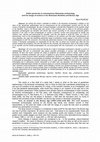
By writing this article I intended to initiate in the Romanian archaeology a debate on the issue ... more By writing this article I intended to initiate in the Romanian archaeology a debate on the issue of the 'genderless epistemology' and its consequences for the archaeological research and for the life course of Romanian archaeologists. By way of several examples I showed that irrespective of the quantity (large in the Neolithic, small in the Bronze Age) and variety of the artefacts easy to relate to the feminine gender, Romanian archaeologists see Neolithic and Bronze Age women according to the present patriarchal pattern dominant in the vision of male archaeologists on women in general: women were preoccupied by fertility and children; men, warriors and preoccupied by sexuality, were the real agents in social life. Since, as I tried to demonstrate, much of the archaeological record is evidence to the contrary and that other interpretations are more plausible, why does this traditional patriarchal image of prehistoric women appear in the works of female archaeologists as well? My conclusion: the profoundly patriarchal character of the relationships between men and women in Romanian archaeology are responsible for the fact that, at almost one hundred year after the first women entered this profession, the men still stand for the universal, the androcentric vision of the world is taken to be scientific and the female-archaeologists are not preoccupied with the construction of an identity of their own.
in Diane Bolger (ed.), A Companion to Gender Prehistory, First Edition 2013, John Wiley & Sons, p. 413-437
in Transylvanian Review 19, 2010, Suppl. 5.1, p. 295-317.
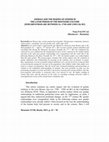
In an earlier paper I analyzed the late Monteoru cemeteries (Late Bronze Age in the Subcarpathian... more In an earlier paper I analyzed the late Monteoru cemeteries (Late Bronze Age in the Subcarpathian Arc − approx. 17 th and the 16 th c. BC) in terms of body related symbolism and concluded that during the Monteoru IIa phase (broadly the 17 th c. BC) the traditional kin centered ties were pushed into the background in favor of ties centered on the smaller family and that at the same time gender relationships were renegotiated with the result that in the following Monteoru IIb phase (broadly the 16 th c. BC) the female gender was ranked higher than the male gender. The present paper continues this earlier inquiry into the evolution of gender definitions and relationships by focusing on the symbolic uses of animals. It argues that: negotiations in terms of animal related symbolism were carried out if not exclusively than at least primarily among the rich part of the population; that children rather than adults were used as a means of negotiation; that the social elite resituated femininity and masculinity in relation to the traditional understandings of animals; that most probably at stake was the positioning of genders in terms of fertility conceived as bearing and rearing children; that this preoccupation with fertility is consistent with a low interest in war, the higher ranking of women than men, and the interests of the elites in extending exchange networks within a transegalitarian society of the entrepreneur community type.
This paper interprets a 9th c. BCE ritual pit from the site at Popeşti (town Mihăileşti, Giurgiu ... more This paper interprets a 9th c. BCE ritual pit from the site at Popeşti (town Mihăileşti, Giurgiu Co.) in southeast Romania as having resulted from a ritual that presents close similarities with the Thesmophoria, the exclusively female festival celebrated in all antique Greek city-states. How exactly to explain this similarity is unclear. At the same time the paper draws attention to the visibility of the female element in the archaeological record – a still often contested aspect in Southeastern European archaeology.

D. Gutsmiedl-Schümann, M. Helmbrecht, J. Kranzbühler (eds), Feministische Perspektiven auf Gender und Archäologie. Beiträge der Tagung zum 25-jährigen Bestehen von FemArc-Netzwerk archäologisch arbeitender Frauen e.V., p. 91-122. Waxmann Verlag GmbH, 2021
The paper presents the first ten years of activity (2008–2018) of the working community titled Ar... more The paper presents the first ten years of activity (2008–2018) of the working community titled Archaeology and Gender in Europe (AGE), focused on gender archaeology and organized within the European Association of Archaeologists (EAA). The first part presents the organization (board and membership structure), goals and
actions (annual and other meetings, sessions within the EAA, workshops outside the EAA, publications) of AGE. Te presentation is detailed in order to compensate for the lack of a thoroughly organized archive. The role of AGE in its members’ careers is also addressed. The second part deals with AGE’s contribution to the research on gender and shows that its themes and theoretical approach do not differ from those of other gender archaeologists in the West and are not the product of
AGE projects proper, but rather of individual preoccupations of the members. The paper concludes that the existence of AGE is important for its members, who, as gender archaeologists, would otherwise feel isolated in their academic milieu as well as at a broader scale as it ‘makes gender stay on the agenda’ and thus prevents younger generations from believing that the study of gender in archaeology was
only ‘a fashion of the past and not a very academic concern’.
Bolger/A Companion to Gender Prehistory, 2012
Archaeometry: dating, diet, mobility, ceramics by Nona Palincas
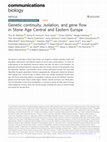
Communications Biology, 2023
The genomic landscape of Stone Age Europe was shaped by multiple migratory waves and population r... more The genomic landscape of Stone Age Europe was shaped by multiple migratory waves and population replacements, but different regions do not all show similar patterns. To refine our understanding of the population dynamics before and after the dawn of the Neolithic, we generated and analyzed genomic sequence data from human remains of 56 individuals from the Mesolithic, Neolithic, and Eneolithic across Central and Eastern Europe. We found that Mesolithic European populations formed a geographically widespread isolation-by-distance zone ranging from Central Europe to Siberia, which was already established 10,000 years ago. We found contrasting patterns of population continuity during the Neolithic transition: people around the lower Dnipro Valley region, Ukraine, showed continuity over 4000 years, from the Mesolithic to the end of the Neolithic, in contrast to almost all other parts of Europe where population turnover drove this cultural change, including vast areas of Central Europe and around the Danube River.
Communications Biology, 2023
This is the section of Supplementary data, presenting the archaeological contexts of the analyzed... more This is the section of Supplementary data, presenting the archaeological contexts of the analyzed individuals as well as their radiocarbon dating, including discussions concerning diet induced age offsets.
Mémoires de la Société préhistorique française, Jan 1, 1999
Resume: Deux evenements archeologiques, mis en evidence dans deux sites situes iI 500 km de dista... more Resume: Deux evenements archeologiques, mis en evidence dans deux sites situes iI 500 km de distance, en Serbie et en Roumanie, etaientjusqu 'a present consideres, principalement par I'interpretation archeologique, comme tres eloignes dans le temps, bien que I'on ait obtenu pour eux 16datations radiocarbonetoutes situees autour de 3300 BP. Un examen rigoureux des echantillons dates et des intervalles de dates apres calibration montre qu'en realite ils ne peuvent s'etre produits que peu de temps l'un apres I'autre (au plus un siecle et demi), ce qui remet en cause la chronologie de certaines industries du Bronze dans la region du Bas Danube.






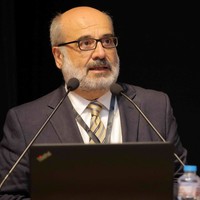

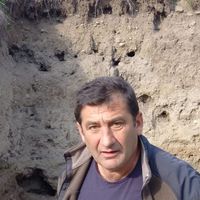


Uploads
Books by Nona Palincas
The departing point of this volume is the 5th Balkan Symposium of Archaeometry: Studies in archaeometry, cultural heritage restoration and conservation is the 5th Balkan Symposium of Archaeometry (25-29 September 2016, Sinaia, Romania), where most of the papers were presented in preliminary form. The contributors are specialists from South-Eastern Europe as well as from other European countries working there.
Some chapters focus on methods (in the research of glass, restoration of stone monuments affected by contemporary graffiti, conservation by irradiation of organic materials such as wood and human and animal body remains); most chapters present case studies (analyses of ceramics, metals, soils, wood anatomy, isotope-based reconstruction of human diet, ancient DNA, radiocarbon dating, technology-assisted field survey, as well as restoration of paper and pigments). The volume covers nearly all aspects of heritage sciences employed in this part of Europe.
Book Reviews by Nona Palincas
Gender archaeology by Nona Palincas
Works and Femininities in the Late Bronze and Early Iron Age in the Lower Danube (c. 1350–800 BC)
Nona Palincaş
Chapter
First Online: 30 March 2024
18 Accesses
Part of the book series: Interdisciplinary Contributions to Archaeology ((IDCA))
Abstract
This chapter analyses the evolution of gender relationships in the later part of the Late Bronze Age and early part of the Early Iron Age in the Lower Danube (c. 1350–800 BC). It takes as a starting point studies of the preceding period (c. 1600/1550–1350 BC), which argue that the latter was characterized not only by a strongly patriarchal regime and a rigorous separation between the various kinds of work of men and women, but also by liberal women achieving a better social status. For the period under study, this paper argues that this division between androtechnics and gynotechnics persists and identifies potters and weavers as subdivisions of gynotechnics. Further, it relies on J.-P. Warnier’s argument that interaction with a specific material culture engenders a corresponding sensori-affective-motor conduct and, consequently, a specific subjectivity. It concludes that potters and weavers had very different subjectivities and constituted two variants of femininity previously unknown for the region of study. It also argues that gender archaeology can lead to the identification of gender variants otherwise unattested by anthropology and sociology, as well as to a reconsideration by archaeologists of material culture – in this particular case, in terms of the weights of the pots and what it meant to interact with them in terms of bodies and subjectivities.
actions (annual and other meetings, sessions within the EAA, workshops outside the EAA, publications) of AGE. Te presentation is detailed in order to compensate for the lack of a thoroughly organized archive. The role of AGE in its members’ careers is also addressed. The second part deals with AGE’s contribution to the research on gender and shows that its themes and theoretical approach do not differ from those of other gender archaeologists in the West and are not the product of
AGE projects proper, but rather of individual preoccupations of the members. The paper concludes that the existence of AGE is important for its members, who, as gender archaeologists, would otherwise feel isolated in their academic milieu as well as at a broader scale as it ‘makes gender stay on the agenda’ and thus prevents younger generations from believing that the study of gender in archaeology was
only ‘a fashion of the past and not a very academic concern’.
Archaeometry: dating, diet, mobility, ceramics by Nona Palincas
The departing point of this volume is the 5th Balkan Symposium of Archaeometry: Studies in archaeometry, cultural heritage restoration and conservation is the 5th Balkan Symposium of Archaeometry (25-29 September 2016, Sinaia, Romania), where most of the papers were presented in preliminary form. The contributors are specialists from South-Eastern Europe as well as from other European countries working there.
Some chapters focus on methods (in the research of glass, restoration of stone monuments affected by contemporary graffiti, conservation by irradiation of organic materials such as wood and human and animal body remains); most chapters present case studies (analyses of ceramics, metals, soils, wood anatomy, isotope-based reconstruction of human diet, ancient DNA, radiocarbon dating, technology-assisted field survey, as well as restoration of paper and pigments). The volume covers nearly all aspects of heritage sciences employed in this part of Europe.
Works and Femininities in the Late Bronze and Early Iron Age in the Lower Danube (c. 1350–800 BC)
Nona Palincaş
Chapter
First Online: 30 March 2024
18 Accesses
Part of the book series: Interdisciplinary Contributions to Archaeology ((IDCA))
Abstract
This chapter analyses the evolution of gender relationships in the later part of the Late Bronze Age and early part of the Early Iron Age in the Lower Danube (c. 1350–800 BC). It takes as a starting point studies of the preceding period (c. 1600/1550–1350 BC), which argue that the latter was characterized not only by a strongly patriarchal regime and a rigorous separation between the various kinds of work of men and women, but also by liberal women achieving a better social status. For the period under study, this paper argues that this division between androtechnics and gynotechnics persists and identifies potters and weavers as subdivisions of gynotechnics. Further, it relies on J.-P. Warnier’s argument that interaction with a specific material culture engenders a corresponding sensori-affective-motor conduct and, consequently, a specific subjectivity. It concludes that potters and weavers had very different subjectivities and constituted two variants of femininity previously unknown for the region of study. It also argues that gender archaeology can lead to the identification of gender variants otherwise unattested by anthropology and sociology, as well as to a reconsideration by archaeologists of material culture – in this particular case, in terms of the weights of the pots and what it meant to interact with them in terms of bodies and subjectivities.
actions (annual and other meetings, sessions within the EAA, workshops outside the EAA, publications) of AGE. Te presentation is detailed in order to compensate for the lack of a thoroughly organized archive. The role of AGE in its members’ careers is also addressed. The second part deals with AGE’s contribution to the research on gender and shows that its themes and theoretical approach do not differ from those of other gender archaeologists in the West and are not the product of
AGE projects proper, but rather of individual preoccupations of the members. The paper concludes that the existence of AGE is important for its members, who, as gender archaeologists, would otherwise feel isolated in their academic milieu as well as at a broader scale as it ‘makes gender stay on the agenda’ and thus prevents younger generations from believing that the study of gender in archaeology was
only ‘a fashion of the past and not a very academic concern’.
Abstract. This paper is an overview of recent developments in the radiocarbon dating of the most frequently analyzed archaeological materials – wood, short-lived plants, and human and animal bones – and draws attention to two sets of consequences. Firstly, while radiocarbon dating has become more accessible to archaeologists thanks to an increase in the number of laboratories, a lowering of prices, and a reduction in sample sizes, it has also grown far more dependent on fields of research, other than the traditional chemical pretreatment of samples and the physics involved in their measurement, such as wood anatomy and other fields of botany, stable isotope-based diet studies, geochemistry, micromorphology, statistics, etc., most of which are not easily accessible by the vast majority of users of radiocarbon dating (and sometimes not familiar to practicing archaeologists). Secondly, given that, on the one hand, there is still much scope for research in radiocarbon dating and, on the other, archaeological sites are a limited resource, there is need to create archives containing the detailed documentation of samples and, whenever possible, sample residues.
This article discusses the results of the radiocarbon dating and a few analyses of carbon and nitrogen stable isotopes for diet reconstruction and elemental composition of metal from the late medieval cemetery (14th/15th to mid-17th century cal AD) with church in Bărăşti (Argeş County, Southern Romania) and argues that, even if only few in number, these analyses still allow us to study people at the level of the individual. This first stage in the archaeometric investigation of the site in Bărăşti also represents the first case study to be published on isotope-based diet reconstruction for medieval Wallachia (present-day Southern Romania).
This paper discusses the absolute dating of the Wietenberg culture based on five new radiocarbon dates and the assessment of the 34 previously published dates. In contradistinction to earlier research that situated the Wietenberg II phase between approx. 1900 and 1700 cal BC, some of the new dates limit this interval to between 1800 (or a few decades earlier) and a few decades after 1750 cal BC, while others indicate that the post-Wietenberg habitations are broadly datable to around 1400 cal BC. With respect to the 34 previously published dates, it is argued that only four can be retained as reliable mostly on account of a failure to respect the methodological requirements specific to the sample material. This paper recommends that future dating attempts focus on features with a variety of datable materials.
This article presents the results of radiocarbon dating and wood anatomy analyses of the wooden church built in Borovineşti (Argeş County, Southern Romania) in 1869. The aim was to verify whether the church was made of reused wood – either from an old church in Cicăneşti, for which contradictory written information exists, or, alternatively, some other church, even if this is not mentioned in written sources. Dendrochronology is not yet available in the study region and radiocarbon dating does not work between 1700 and 1950. Nevertheless, the risk of using the radiocarbon method was taken in the hope that the dated material would contain much older wood and thus the life history of the church in Borovineşti could be elucidated. The results were indecisive and, owing to the lack of preserved bark and the only partially preserved sapwood, it is not certain if even dendrochronology would have produced much better results.
The sanctuary treasure from Cioclovina cu Apă cave is one of the most remarkable discoveries from the Late Bronze Age of temperate Europe, first of all in terms of exotic materials (glass and amber beads). From these perspectives, it played an important role in knowing what has been called the glass road between Mesopotamia, Egypt, Mycenae, Transylvania, Germany and Denmark
The results of 14C analyzes of three new samples, coming from the altar-gallery B and C, confirms the dating of artifact deposits from the sanctuary in Late BronzeAge II/ Br. D. For example, the deposition in altar-gallery B took place between 1407–1256 cal BC with a 90.2% probability and between 1248-1227 with a 5.3% probability.
Keywords: Late Bronze Age, cave sanctuary, bronze, tin, glass and amber artifacts, 14C dating
Based on parallels of the pottery and the radiocarbon dates obtained for the human and hare skeletons, it could be established that the feature dates to the interval 985–843 cal BC. Correlations with other discoveries dated by radiocarbon allow the narrowing down of this interval to the first
half of the 10th century BC. Therefore, we consider that this rchaeological feature can be attributed to the end of the second phase or the beginning of the third phase of the Gáva culture — i.e., it belongs to the Early Iron Age at the chronological level corresponding to the Ha B1 horizon in the chronology based on metal objects
local practices so that they would favour the development of IDR in Romania rather than simply maintain Romanian archaeology at the level of a source of samples for important Western research projects.
Romanian archaeology is too narrow with respect to the variety of data
that can potentially be collected from the feldwork as well as later, in
the laboratory, from the archaeological material, and that this is caused
by the dominance of the culture-historical paradigm, which is ultimately limited to the identifcation of social groups and does not provide the theoretical tools necessary for the meaningful integration of these new categories of data (i.e., it cannot use them to explain how societies work). Further, it argues that the scope of what is presently seen as standard knowledge in Romanian archaeology should be very much widened to include whatever domain of the social and natural sciences is necessary in
order to provide better archaeological results. It also draws attention to
the consequences of the delay of such a change in archaeology: the risk
of losing precious information in the feld, in a period when expanding
infrastructure works and construction of residential areas are destroying
archaeological sites at a quicker rate than in earlier times.
At the same time, the paper highlights that the changes needed in
Romanian archaeology cannot be left to archaeologists at the individual
level alone, and that an extensive process of institutional development is
absolutely necessary.
archaeological culture and the normative thinking it is grounded in continues to dominate the Romanian archaeological literature decades after they have been seriously challenged. The first counterarguments were brought about already in the '60es by the "New Archaeology"/processualism, but this paper is confined to the
most recent counterarguments from a postprocessual perspective.
This article refers to prehistoric archaeology and that of the later periods alike since the only difference between them is that the term archaeological culture has been replaced for the historic periods with names of the people known from written sources. What is here important is the pervasiveness of the normative thinking.
Since the archaeological culture is not a neutral term, derived from the
archaeological evidence, but a product of the normative thinking of modem sociology, the rejection of normativism by more recent social theory implies that there is no reason to continue and maintain the concept of archaeological culture. The rejection of normativism also bears consequences on the understanding of the role of materiality in social life as well as on the use and understanding of the main
archaeological methods: chronology (cross dating in the first place), but also typology and chorology.
Abstract: This article presents the results of an archaeological intervention carried out in 2010 involving the exhumation of the remains of Bishop Vasile Aftenie (1899-1950). The intervention took place as part of the efforts of the Greek Catholic Church of Romania to beatify said bishop, who, from a Christian perspective, died a martyr's death: he was arrested in 1948 by the Securitate (the Romanian secret police under communism), tortured and pressured into renouncing his faith. The inventory items discovered (fragments of clothing, a collar), the stature of the deceased as computed using anthropological analysis (and in keeping with witness statements), as well as circumstancial evidence confirms the oral testimony relating to the site of the bishop's burial. Among the material used to fill the grave we found many coins as well as a glass phial with a metal lid containing some strands of hair and a slip of paper containing a prayer for the lifting of curses. The coins and phial, together with the candles from the grave, represent the material expression of the homage and prayers offered up by the faithful to the bishop. The results of our archaeological research rendered material expression to the relationship existing between the bishop's remains and the faithful, confirming the fact that, long before the Romanian Greek Catholic Church began considering the bishop for beatification, some people had already begun honouring him as a saint of their own accord. Rezumat: Articolul prezintă rezultatele intervenţiei arheologice din anul 2010 prilejuită de exhumarea osemintelor Episco-pului Vasile Aftenie (1899-1950). Intervenţia s-a desfășurat ca parte a demersurilor efectuate de Biserica Greco-Catolică din România în vederea beatificării episcopului care, din perspectivă creștină, a avut o moarte martirică: acesta a fost arestat în anul 1948 de Secu-ritate, torturat și supus presiunilor pentru a se dezice de credinţa sa. Elementele de inventar descoperite (fragmente din veşminte, un colar), statura decedatului stabilită de expertiza antropologică (conforme cu informaţiile martorilor), cât și datele generale confirmă mărturiile orale legate de locul de înmormântare al episcopului. În umplutura gropii funerare am descoperit mai multe monede, dar şi un flacon de sticlă cu capac metalic având în interior fire de păr şi un bilet ce conţinea o rugăciune pentru dezlegarea blestemelor. Monedele şi flaconul, împreună cu lumânările de pe mormânt, constituie împreună materialitatea cinstirii şi rugilor pe care credincioşii le-au adus episcopului Vasile Aftenie. Rezultatele cercetării arheologice oferă materialitate relaţiei stabilite între corpul episcopului şi credincioşi, confirmând faptul că mult înainte ca Biserica Greco-Catolică din România să-şi fi propus a-l beatifica, unii oameni l-au cinstit în mod spontan ca pe un sfânt.
The article presents 17 vessels of Zimnicea-Plovdiv type found in the 1960s, during excavations in the Neolithic site at Căscioarele (on the Lower Danube). The are dated, based on parallels with similar vessels from Popeşti, to the 13th-12th centuries BC, possibly also beginning with the 14th century BC.
Mircea Niţu in the village Pasărea. com. Brăneşti. Ilfov County, yielded an approx. 30 cm thick archaeological deposit, remains of a hearth that has
been taken apart in antiquity, a refuse pit, and a pit with no inventory that
could have served as a post-hole for a large pillar. Both pits cut the layer,
but it is not possible to say how much more recent they were.
The most interesting material was found in the refuse pit (fig. 1-2). It
consisted of a fragment of a medium sized vessel decorated with (probably four, three of which preserved) small protrusion at the limit between the neck basis and the shoulder, fragments from at least two other medium sized coarse vessels and the half of an antler cheek piece (fig. 2/4). Parallels of the first piece (fig. 1) are known from the early Hallstatt layers in the settlement at Popeşti, Giurgiu County, and were dated to the 10th-9th centuries BC. The rest of the material is not narrowly datable. The cheek piece has no exact parallel in Boroffka's typology.
The layer yielded a predominantly coarse pottery belonging to types
in use over several centuries, none of the sherds being useful for dating, as well as animal bones one of which presents clear traces of manufacturing (two rectangular holes pierced into the bone; fig. 4/5).
There are also large pieces of hearth crust, 5 cm thick with further
pieces of burnt earth underneath, pointing to an intense and probably long term use of the hearth (before being eventually destroyed) and, by implication, to a long term use of the site.
Its shape, decoration - four pairs of knobs and lugs -- and, more importantly, the outside black/inside light brown (reducing/[lightly] oxidizing, respectively) firing technique has parallels in the early Hallstatt settlement at Popeşti (Giurgiu County) and allows the vessel to be dated to the 9th century BC.
Archaeology provides important tools to study past societies. Past people from all parts of societies left behind material remains. Archaeology can therefore shed light on the living conditions of marginalized groups. This has been one of the main topics in feminist archaeology from the very beginning. But feminist archaeology does not only explore the past; it also considers present-day societies regarding the relationship between archaeological discourse and contemporary cultural logics, the role of archaeology for the general public, or the rationale and working conditions within archaeological institutions.